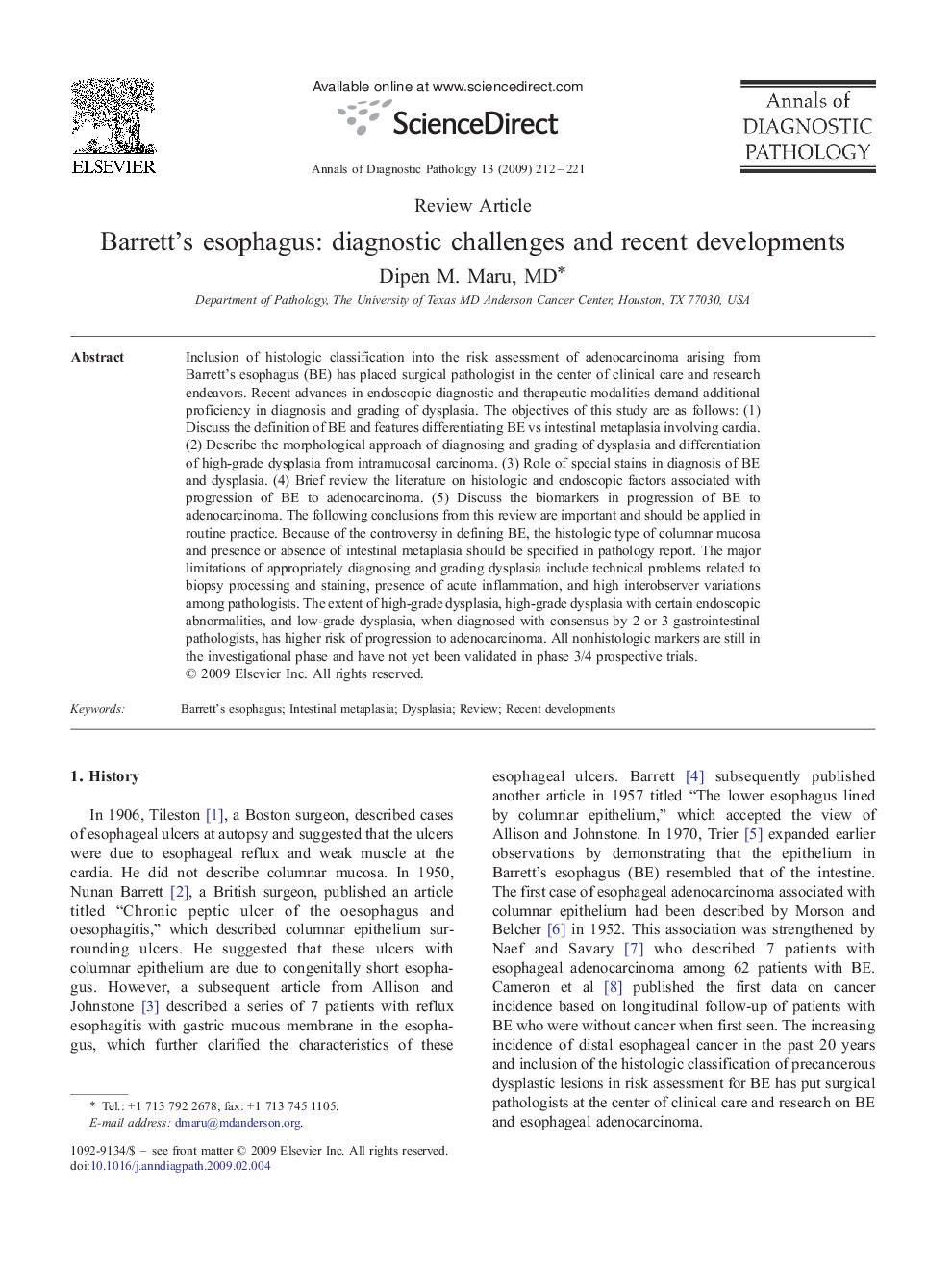| Article ID | Journal | Published Year | Pages | File Type |
|---|---|---|---|---|
| 4130356 | Annals of Diagnostic Pathology | 2009 | 10 Pages |
Inclusion of histologic classification into the risk assessment of adenocarcinoma arising from Barrett's esophagus (BE) has placed surgical pathologist in the center of clinical care and research endeavors. Recent advances in endoscopic diagnostic and therapeutic modalities demand additional proficiency in diagnosis and grading of dysplasia. The objectives of this study are as follows: (1) Discuss the definition of BE and features differentiating BE vs intestinal metaplasia involving cardia. (2) Describe the morphological approach of diagnosing and grading of dysplasia and differentiation of high-grade dysplasia from intramucosal carcinoma. (3) Role of special stains in diagnosis of BE and dysplasia. (4) Brief review the literature on histologic and endoscopic factors associated with progression of BE to adenocarcinoma. (5) Discuss the biomarkers in progression of BE to adenocarcinoma. The following conclusions from this review are important and should be applied in routine practice. Because of the controversy in defining BE, the histologic type of columnar mucosa and presence or absence of intestinal metaplasia should be specified in pathology report. The major limitations of appropriately diagnosing and grading dysplasia include technical problems related to biopsy processing and staining, presence of acute inflammation, and high interobserver variations among pathologists. The extent of high-grade dysplasia, high-grade dysplasia with certain endoscopic abnormalities, and low-grade dysplasia, when diagnosed with consensus by 2 or 3 gastrointestinal pathologists, has higher risk of progression to adenocarcinoma. All nonhistologic markers are still in the investigational phase and have not yet been validated in phase 3/4 prospective trials.
